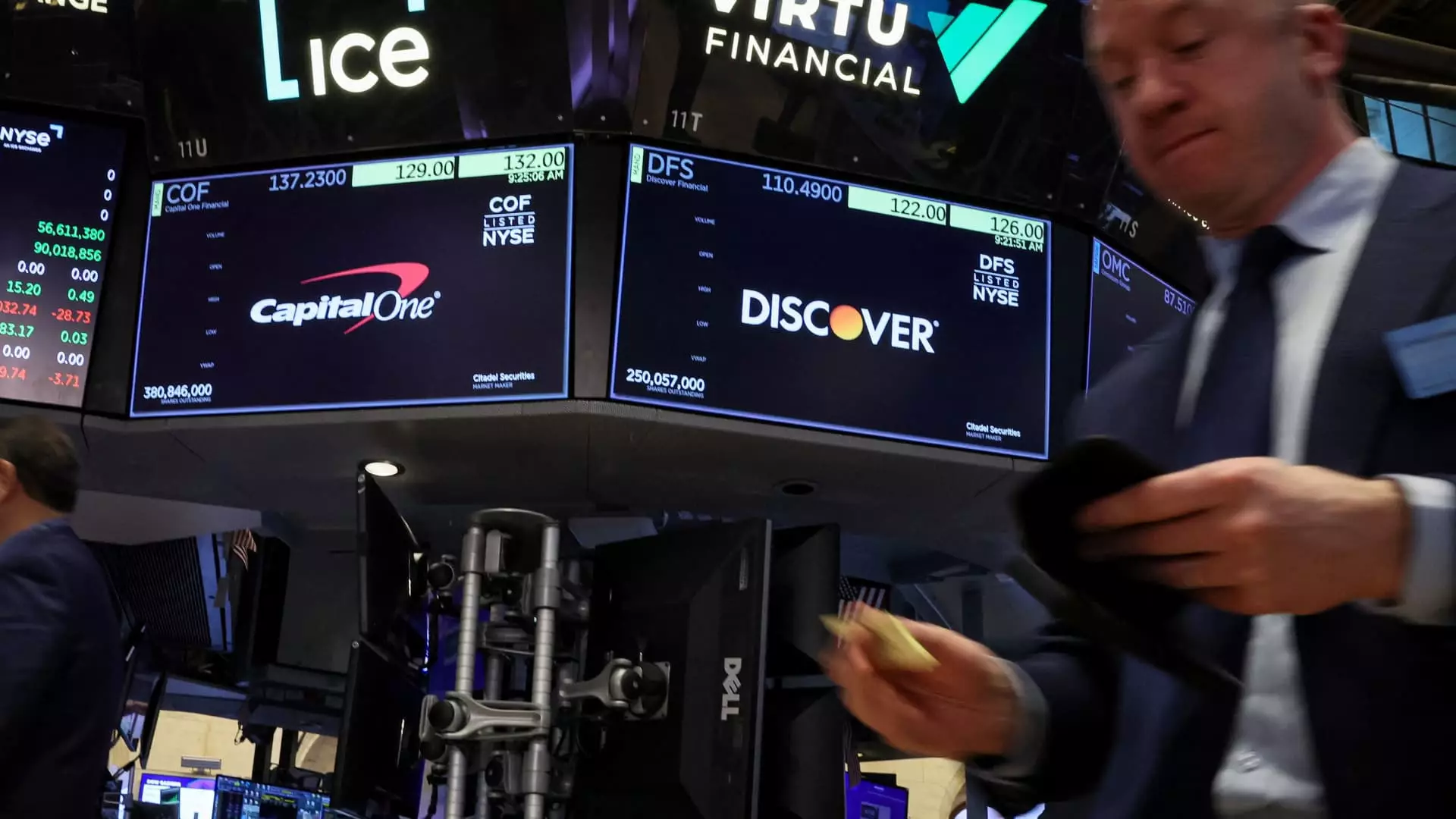In the swirling world of financial services, Capital One is on the verge of a significant transformation. The proposed merger with Discover Financial Services, while met with skepticism by some, has ignited hope among analysts, particularly at BTIG. They believe that if this blockbuster deal comes to fruition, the value of Capital One could skyrocket to a staggering $427 per share, signifying an impressive upside of over 137% from the most recent market close. This bold assertion encapsulates the excitement and anxiety surrounding this merger and the substantial implications it may have for market dynamics, particularly in the credit card industry.
Analysts at BTIG have elevated Capital One’s stock rating to “buy,” stressing the potential for significant earnings growth as Capital One looks to leverage Discover’s existing network. In their view, the integration of Discover’s capabilities with Capital One’s innovative technology could reposition the two brands to directly compete with market giants like Visa and Mastercard. The idea that a merger could unearth an “unpolished diamond” within Discover’s operations reflects not only optimism but also a profound belief in the possibilities of corporate synergy.
The Underlying Strength of Capital One
What’s particularly compelling about BTIG’s analysis is that it remains largely bullish on Capital One even if the merger fails to materialize. With a projected price target of $208 for Capital One’s shares on a standalone basis, which still suggests a healthy return of approximately 15%, analysts are forecasting a strong market performance irrespective of regulatory setbacks. This oversight underscores a fundamental strength within Capital One that is often drowned out by merger chatter. The bank has amassed an impressive capital reserve since announcing its merger plans earlier this year, giving it the flexibility to potentially repurchase $25 billion worth of stock. Such a buyback would not only enhance shareholder value but also significantly boost earnings per share, projecting the image of resilience during uncertain times in the financial markets.
One astute move made by Capital One in recent years has been its tightening of underwriting standards. In an environment where consumer spending is increasingly shaky, this strategy sets the financial institution apart from its peers, like American Express and Ally Financial. This prudent approach demonstrates a level of preparedness that many investors prefer over reckless growth tactics, especially when facing potential market headwinds.
Regulatory Concerns and Market Sentiment
Nonetheless, the backdrop to this optimistic view is fraught with regulatory scrutiny. The U.S. Justice Department has signaled concerns about the merger’s implications for competition in the subprime credit card market. While this poses a legitimate challenge, Capital One has expressed confidence in its compliance with all regulatory requirements, suggesting a qualitative assurance of its strategic foresight.
This situation presents a dual narrative: where uncertainty could deter cautious investors, it also creates an opportunity for bargain hunters who understand the intrinsic value of Capital One. Analysts from firms like Citi, KBW, and Jefferies have reaffirmed their support for the merger, highlighting a collective optimism that could sway market sentiment towards recovery. Skeptics are right to approach the situation with caution, but it’s essential to identify the potential upsides that may result from such significant shifts.
Impacts of External Factors
The political landscape is another element that plays into the overall assessment of Capital One’s future. The bank recently found itself embroiled in a legal dispute with the Trump Organization concerning allegations of consumer protection violations post-Capitol attack. Although Capital One insists its actions are apolitical, the negative media spotlight requires skillful navigation. Corporations must manage their public relations thoughtfully, particularly when intertwined with politically charged environments.
However, the exploration of alternative avenues, such as possibly divesting parts of Discover’s subprime portfolio if it means stabilizing the merger’s chances, could be a prudent strategy for Capital One’s leadership. As CEO Richard Fairbank reportedly prioritizes gaining regulatory approval, making such compromises appears to be a necessary tactic in today’s volatile market.
In the end, the proposed merger with Discover signifies much more than just a potential doubling of Capital One’s market value. It encapsulates the ongoing evolution of a financial player that, despite facing hurdles, may find a way to thrive against all odds. With a blend of strategic foresight, inherent strengths, and cautious optimism, the trajectory of Capital One will continue to intrigue investors and analysts alike as the market eagerly watches for the next move.

